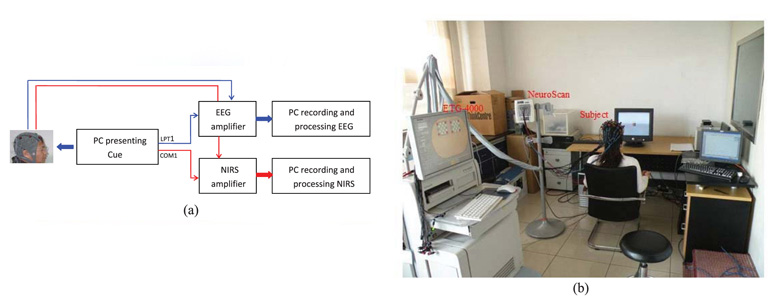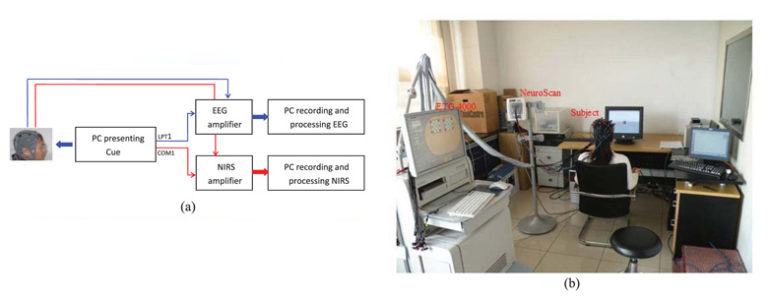
Simultaneous acquisition of brain activity signals from the sensorimotor area using NIRS combined with EEG, imagined hand clenching force and speed modulation of brain activity, as well as 6-class classification of these imagined motor parameters by NIRS-EEG were explored. Near infrared probes were aligned with C3 and C4, and EEG electrodes were placed midway between the NIRS probes. NIRS and EEG signals were acquired from 6 healthy subjects during 6 imagined hand clenching force and speed tasks involving the right hand. The results showed that NIRS combined with EEG is effective for simultaneously measuring brain activity of the sensorimotor area. The study also showed that in the duration of (0, 10) s for imagined force and speed of hand clenching, HbO first exhibited a negative variation trend, which was followed by a negative peak. After the negative peak, it exhibited a positive variation trend with a positive peak about 6–8 s after termination of imagined movement. During (-2, 1) s, the EEG may have indicated neural processing during the preparation, execution, and monitoring of a given imagined force and speed of hand clenching. The instantaneous phase, frequency, and amplitude feature of the EEG were calculated by Hilbert transform; HbO and the difference between HbO and Hb concentrations were extracted. The features of NIRS and EEG were combined to classify 3 levels of imagined force (at 20/50/80 % MVGF (maximum voluntary grip force)) and speed (at 0.5/1/2 Hz) of hand clenching by SVM. The average classification accuracy of the NIRS-EEG fusion feature was 0.74 ± 0.02. These results may provide increased control commands of force and speed for a brain-controlled robot based on NIRS-EEG.

